
ACTA MECHANICA SINICA
Scope & Guideline
Driving Excellence in Mechanical Engineering Scholarship
Introduction
Aims and Scopes
- Applied Mechanics and Engineering:
The journal covers a wide range of topics in applied mechanics, including solid mechanics, fluid mechanics, dynamics, vibrations, and materials science, aiming to bridge theoretical concepts with practical engineering applications. - Computational Mechanics:
A significant portion of the publications focuses on numerical methods, simulations, and computational frameworks for solving complex mechanical problems, including finite element methods, computational fluid dynamics, and machine learning applications. - Biomechanics and Medical Applications:
Research related to biomechanics, particularly in the context of medical devices, tissue mechanics, and surgical simulations, is a core area, reflecting the journal's commitment to health-related engineering challenges. - Innovative Materials and Structures:
The journal emphasizes studies on new materials, including nanomaterials, composites, and biomaterials, and their mechanical properties, interactions, and applications in various engineering fields. - Multiscale and Multiphysics Approaches:
Research that integrates multiple physical phenomena at different scales, such as thermomechanics, electromagnetics, and fluid-structure interactions, is highlighted, showcasing the complexity of modern mechanical problems.
Trending and Emerging
- Machine Learning and AI in Mechanics:
The incorporation of machine learning and artificial intelligence techniques in modeling, simulation, and optimization processes is rapidly increasing, showcasing the integration of data-driven approaches in mechanical research. - Advanced Materials and Smart Structures:
Research on smart materials, including shape memory alloys, metamaterials, and bio-inspired materials, is gaining traction, emphasizing their applications in responsive and adaptive structural designs. - Fluid-Structure Interaction (FSI):
Studies focusing on fluid-structure interactions, particularly in complex environments such as biomedicine and aerospace, are on the rise, reflecting the need for comprehensive analyses of coupled systems. - Sustainable and Green Engineering:
There is a growing emphasis on sustainability, with research directed towards renewable energy systems, eco-friendly materials, and energy-efficient designs, aligning with global sustainability goals. - Biomechanics and Mechanobiology:
Emerging themes in biomechanics, particularly those addressing mechanobiological interactions in medical applications, are becoming increasingly important, highlighting the relevance of mechanics in health sciences.
Declining or Waning
- Traditional Fluid Dynamics:
While fluid mechanics remains a core topic, traditional studies focused solely on classical fluid dynamics without incorporating modern computational or experimental techniques are becoming less common. - Static Structural Analysis:
Research centered around static analysis of structures, particularly in conventional materials, is declining as the focus shifts towards dynamic, time-dependent, and complex material behaviors. - Basic Theoretical Mechanics:
Papers that primarily discuss foundational theories in mechanics, without application or interdisciplinary integration, are less prevalent, indicating a move towards more applied and practical research. - Single-Disciplinary Studies:
There is a noticeable reduction in publications that focus exclusively on one discipline of mechanics without interdisciplinary approaches, as researchers increasingly seek collaborative and integrative studies. - Conventional Experimental Techniques:
The use of traditional experimental methods without innovative enhancements or integration with computational approaches is decreasing, as the field moves towards more advanced and hybrid methodologies.
Similar Journals
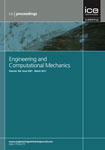
Proceedings of the Institution of Civil Engineers-Engineering and Computational Mechanics
Unlocking New Dimensions in Structural and Material MechanicsProceedings of the Institution of Civil Engineers - Engineering and Computational Mechanics is a prestigious journal published by Emerald Group Publishing Ltd, dedicated to advancing the fields of civil and structural engineering, as well as mechanics of materials. With an ISSN of 1755-0777 and E-ISSN 1755-0785, this journal serves as a critical platform for disseminating innovative research and practical insights from 2009 through 2024. As part of its commitment to academic rigor, it is categorized in the Q4 quartile for both civil and structural engineering and mechanics of materials, reflecting a unique position in the scholarly community. The journal is essential for professionals, researchers, and students aiming to stay informed on current trends, methodologies, and applications in engineering and computational mechanics. By engaging with this publication, readers gain access to crucial findings that contribute to the advancement of infrastructure and materials science, vital for developing resilient and sustainable engineering solutions.
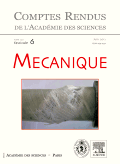
COMPTES RENDUS MECANIQUE
Exploring New Horizons in Mechanics and Materials ResearchCOMPTES RENDUS MECANIQUE, an esteemed journal published by the Académie des Sciences, serves as a critical platform for cutting-edge research in the fields of mechanics and materials science. With an ISSN of 1631-0721 and an E-ISSN of 1873-7234, this open-access journal has gained visibility since its transition to open access in 2020, encouraging a broader dissemination of knowledge within the community. As of 2023, it holds a Q3 ranking in both the Materials Science (Miscellaneous) and Mechanics of Materials categories, according to category quartiles. Given its Scopus rankings—299th out of 398 in Mechanics of Materials and 360th out of 463 in General Materials Science—it provides valuable insights and advancements in these disciplines. Located in Paris, France, the journal caters to researchers, professionals, and students alike, showcasing a diverse range of studies and developments that push the boundaries of knowledge in mechanics. Through its accessible format, COMPTES RENDUS MECANIQUE not only highlights significant findings but also promotes collaboration and innovation across the global scientific community.
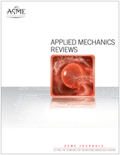
Applied Mechanics Reviews
Exploring the Depths of Mechanical Research Excellence.Applied Mechanics Reviews, a prestigious journal published by ASME (American Society of Mechanical Engineers), is an essential resource in the field of mechanical engineering. With an impact factor reflecting its high relevance and rigorous peer-review process, this journal holds a commendable Q1 ranking in the 2023 category quartiles and is positioned at an impressive rank of #7 out of 672 in Scopus rankings, placing it in the 99th percentile. The journal, with an ISSN of 0003-6900 and E-ISSN of 2379-0407, serves as a vital platform for the dissemination of groundbreaking research, offering a comprehensive overview of applied mechanics, spanning theoretical developments to practical applications. Although it does not provide open access options, the insights published within these pages are invaluable for researchers, professionals, and students eager to enhance their knowledge and stay abreast of the latest advancements. With volumes dating back to 1965 and continuing through 2024, Applied Mechanics Reviews remains a cornerstone of the mechanical engineering community, fostering innovation and collaboration across various domains of engineering.

Journal of the Serbian Society for Computational Mechanics
Fostering Collaboration in Computational ResearchJournal of the Serbian Society for Computational Mechanics, published by the Serbian Society for Computational Mechanics, is a vital platform for advancing research and knowledge in the field of computational mechanics. Established in 2012, this journal serves the academic community by providing a forum for innovative studies, methodologies, and applications within computational mechanics, presenting valuable insights for researchers, professionals, and students alike. With an ISSN of 1820-6530 and a ranking of Q4 in Computational Mechanics, it carries an essential influence in the engineering realm, despite its current rank of 71 out of 89. The journal's commitment to scholarly excellence aims to foster collaboration and encourage interdisciplinary research, making it an important resource for those invested in the evolving landscape of computational methodologies. Although the journal currently does not offer Open Access options, it remains dedicated to disseminating knowledge that will resonate within the local and global scientific community.

PERIODICA POLYTECHNICA-MECHANICAL ENGINEERING
Advancing Mechanical Engineering Through Open InnovationPERIODICA POLYTECHNICA-MECHANICAL ENGINEERING, published by the Budapest University of Technology and Economics, is a distinguished open access journal that has been committed to advancing the field of mechanical engineering since its inception in 1969. With an E-ISSN of 1587-379X, this journal makes a significant contribution to the dissemination of cutting-edge research, currently holding a Q3 ranking in the prestigious Scopus category for Mechanical Engineering. Offering a platform for researchers to share innovative findings and methodologies, PERIODICA POLYTECHNICA serves as a vital resource for professionals, scholars, and students looking to stay abreast of the latest developments in mechanical engineering. With an open access format established since 1999, it ensures high accessibility to valuable knowledge, enabling a global audience to engage with pioneering studies while enhancing collaboration and knowledge-sharing within the field.
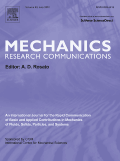
MECHANICS RESEARCH COMMUNICATIONS
Pioneering Research in Mechanics and Material ScienceMECHANICS RESEARCH COMMUNICATIONS, published by PERGAMON-ELSEVIER SCIENCE LTD, is a prestigious journal in the fields of Civil and Structural Engineering, Condensed Matter Physics, Materials Science, and Mechanical Engineering. With an ISSN of 0093-6413 and E-ISSN of 1873-3972, it has made significant contributions to the understanding and advancement of mechanics and materials since its inception in 1974. The journal is well-regarded in academia, holding a Q2 ranking across multiple categories as of 2023, and ranking in the 65th percentile for Mechanical Engineering. Researchers and professionals benefit from its peer-reviewed content, which includes a wide range of articles from fundamental research to applied technological developments. Although currently not an open access journal, it remains a vital resource for those focused on innovating within the engineering and materials science domains. With its established legacy, MECHANICS RESEARCH COMMUNICATIONS continues to shape the discourse in mechanics and engineering, making it essential reading for students and practitioners alike.

INTERNATIONAL APPLIED MECHANICS
Transforming Ideas into Engineering ExcellenceINTERNATIONAL APPLIED MECHANICS, published by Springer, is a pivotal journal within the realm of Mechanical Engineering and Mechanics of Materials. With an ISSN of 1063-7095 and an E-ISSN of 1573-8582, this journal serves as a vital resource for researchers and professionals seeking to stay at the forefront of applied mechanics from 1992 to 2024. Although currently categorized in Q4, with a Scopus ranking reflecting its evolving impact (479 out of 672 in Mechanical Engineering and 303 out of 398 in Mechanics of Materials), the journal continually strives to publish innovative research that bridges theoretical concepts and practical applications in mechanics. Notably, it does not offer Open Access, allowing for a focused distribution amongst scholars and institutions. The journal's contributions are essential for advancing knowledge, fostering collaboration, and enhancing education in the diverse fields of engineering mechanics.
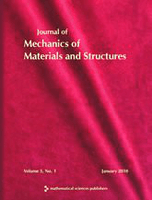
Journal of Mechanics of Materials and Structures
Advancing the Science of Materials and Structures.Journal of Mechanics of Materials and Structures, published by Mathematical Science Publishers, is a distinguished periodical in the field of Applied Mathematics and Mechanics of Materials. With the ISSN 1559-3959, this journal has been a pivotal platform since its inception in 2006, providing insights and advancements in the mechanics of materials and their structural applications. Operating out of the University of California, Berkeley, this journal not only boasts a respectable standing within its categories, ranking Q4 in Applied Mathematics and Q3 in Mechanics of Materials as of 2023, but it also serves a crucial role in fostering academic discourse among researchers, practitioners, and students alike. Although it does not currently offer open access, its contributions to the respective fields are invaluable, underscoring the relevance and importance of continued research in understanding material behavior and structural integrity. Whether investigating theoretical frameworks or engineering applications, the Journal of Mechanics of Materials and Structures remains an essential resource for anyone dedicated to the advancement of the science of materials and structures.
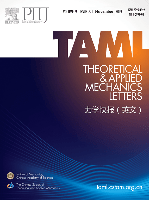
Theoretical and Applied Mechanics Letters
Fostering Innovation in Mechanics for a Sustainable TomorrowTheoretical and Applied Mechanics Letters, published by ELSEVIER, stands as a premier journal in the field of engineering and applied mechanics, recognized for its rigorous peer-reviewed articles that advance theoretical and practical frameworks. With an impressive open access policy established in 2015, the journal enhances global accessibility to cutting-edge research across a range of disciplines including Aerospace, Civil, Mechanical, and Biomedical Engineering, along with Computational Mechanics and Ocean Engineering. The journal boasts an enviable position in the academic landscape, achieving a Q1 rank in several categories as of 2023, while being cited among the top percentiles in Scopus Ranks, specifically ranking #25 in Aerospace Engineering and #15 in Computational Mechanics. The journal aims to foster innovation by providing a platform for scholars and professionals to disseminate their findings, thereby bridging the gap between theoretical research and practical applications. By promoting a diverse range of topics and methodologies, Theoretical and Applied Mechanics Letters not only contributes to the advancement of engineering disciplines but also supports the global academic community in exploring sustainable and impactful engineering solutions.
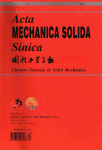
ACTA MECHANICA SOLIDA SINICA
Exploring Innovations in Mechanics of MaterialsACTA MECHANICA SOLIDA SINICA is a prestigious journal published by Springer, dedicated to advancing research in the fields of Computational Mechanics, Mechanical Engineering, and Mechanics of Materials. Since its inception in 1981, the journal has established a significant presence in the academic community, holding a commendable Q2 ranking across its categories as of 2023. Furthermore, it is recognized for its impactful contributions, with Scopus rankings placing it in the top quartiles, fostering essential discourse among professionals and researchers in the engineering domain. While it operates under a traditional access model, ACTA MECHANICA SOLIDA SINICA continues to provide valuable insights and developments, making it an essential resource for those seeking to deepen their understanding of solid mechanics and related disciplines. The journal remains an influential platform for innovative theoretical and experimental studies, reinforcing its status in the global academic landscape.